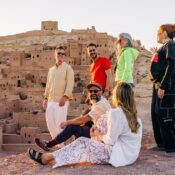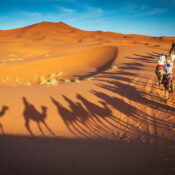
Casablanca: Modernity and tradition in Morocco’s economic capital
Introduction
Casablanca, the vibrant economic capital of Morocco, serves as a captivating blend of modernity and tradition. Situated along the Atlantic coast, this dynamic city boasts a rich history, diverse culture, and thriving economy. Let’s explore the unique charm and allure of Casablanca, where the past seamlessly merges with the present.
Historical background
Origins and early development
Casablanca’s narrative originates from a humble Berber village, metamorphosing into a thriving port city. Across centuries, it magnetized traders and migrants, crafting its essence as a nexus of commerce and culture. The evolution traces back to its modest beginnings, steadily expanding to embody a dynamic convergence of influences. From the Berber roots emerged a vibrant tapestry of traditions, blending with the influx of diverse communities. This narrative encapsulates Casablanca’s journey from its nascent stages to its current status as a pulsating metropolis, echoing the rich tapestry of its history and heritage.
Modern economic hub
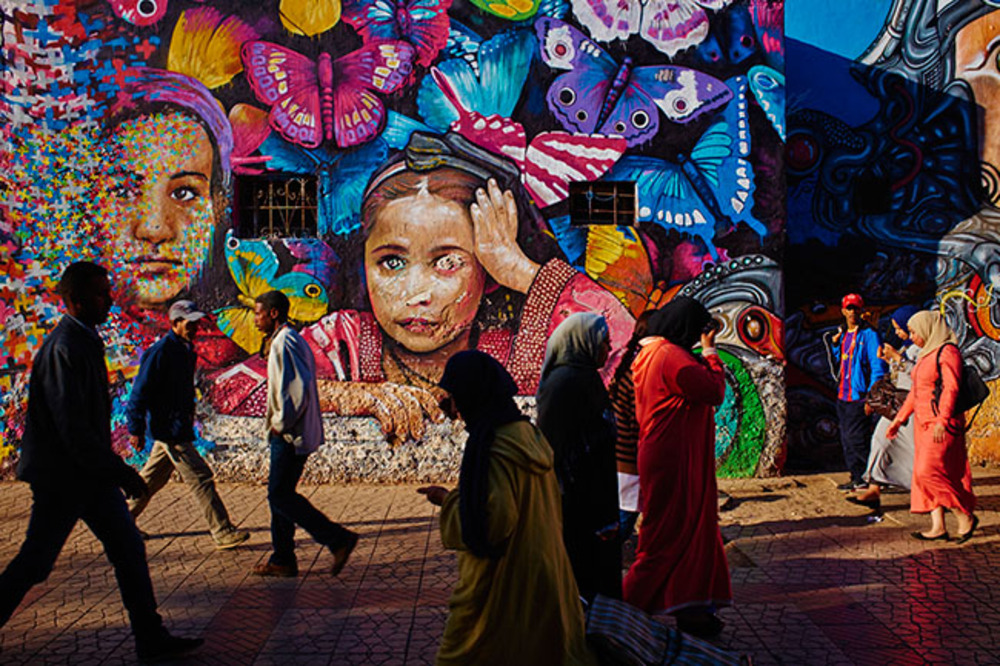
Infrastructure development
Casablanca, a city renowned for its modern infrastructure, features an extensive network of highways, ports, and airports. This robust infrastructure supports efficient trade operations and enhances connectivity not only within the country but also on a global scale. The well-developed transportation facilities contribute significantly to the city’s economic growth, serving as pivotal hubs for commerce and travel. With its strategic location and advanced infrastructure, Casablanca continues to play a crucial role in facilitating trade and fostering connections between various regions, thereby bolstering its position as a key economic center.
Industrial and commercial significance
Casablanca, a key economic hub in Morocco, boasts diverse industries pivotal to the nation’s economy. Its influence spans finance, manufacturing, technology, and logistics, fostering innovation and growth. The city’s dynamic landscape drives advancements across sectors, contributing significantly to Morocco’s economic vitality. With a robust presence in finance and manufacturing, coupled with burgeoning technology and logistics sectors, Casablanca stands as a beacon of opportunity and progress within the region, attracting both domestic and international investment.
Cultural diversity
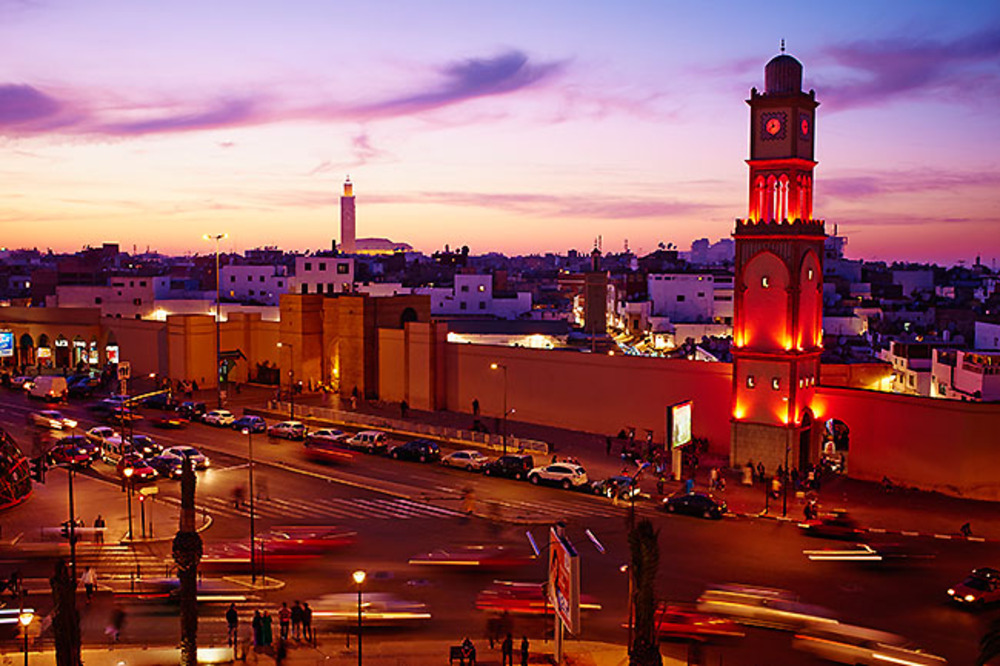
Ethnic composition
Casablanca, a bustling metropolis in Morocco, boasts a vibrant population mirroring a mosaic of ethnicities. The city’s demographic makeup intertwines Arab, Berber, and European heritage, fostering a rich cultural milieu. This diversity resonates throughout Casablanca’s linguistic landscape, where Arabic, Berber dialects, and French intermingle seamlessly. Culinary offerings echo this fusion, with tantalizing dishes drawing from various culinary traditions. Moreover, Casablanca’s customs and traditions reflect this blend, creating a unique tapestry of cultural expression that defines the city’s identity.
Arts and entertainment scene
Casablanca’s cultural scene is a vibrant tapestry of artistic endeavors spanning traditional melodies and dances to cutting-edge art showcases. The city pulsates with theaters, galleries, and festivals that pay homage to Morocco’s rich heritage. Traditional music resonates through the narrow streets, while contemporary art exhibitions captivate audiences with their innovative expressions. The blend of old and new, traditional and modern, creates a dynamic cultural landscape that reflects the city’s diverse and ever-evolving identity.
Architectural marvels
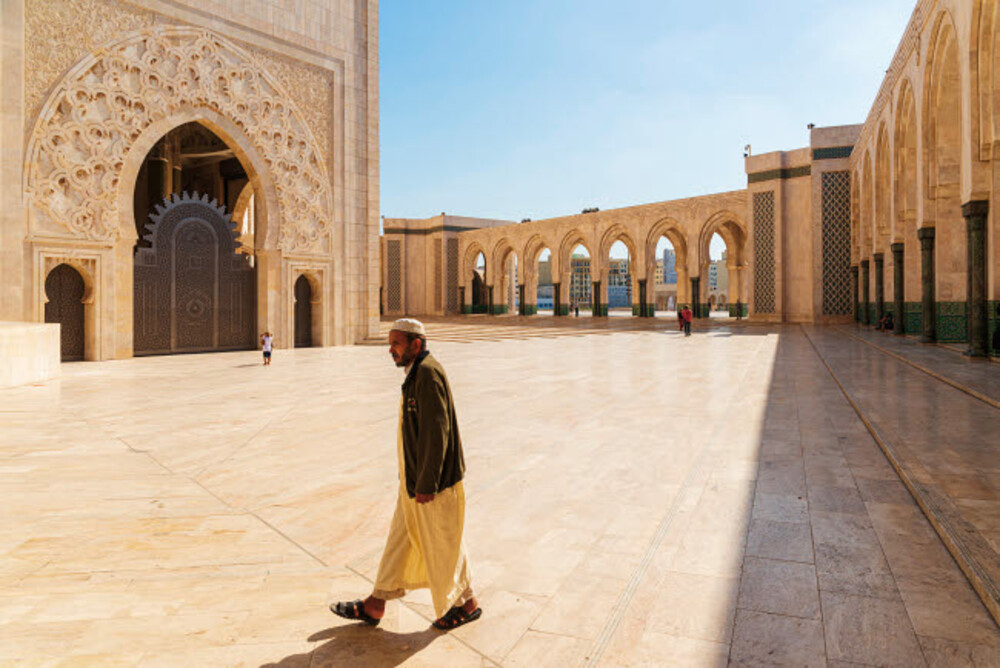
Blend of traditional and modern architecture
Casablanca’s skyline epitomizes a captivating fusion of traditional Moroccan aesthetics and contemporary architectural trends. The majestic silhouette is dominated by landmarks such as the iconic Hassan II Mosque, a testament to the city’s rich heritage and religious significance. Amidst the bustling downtown area, Art Deco buildings stand as elegant reminders of Casablanca’s cosmopolitan history and progressive spirit. Each edifice narrates a compelling tale, seamlessly weaving together the intricate tapestry of the city’s past and present, offering visitors a glimpse into its vibrant cultural landscape.
Landmarks and iconic structures
Casablanca’s architectural landscape is a mesmerizing blend of history and modernity, drawing visitors into its tapestry of contrasts. The city’s historic medinas and vibrant souks offer glimpses into its rich past, while sleek skyscrapers symbolize its embrace of contemporary development. Landmarks such as the Corniche, with its scenic coastal promenade, and the iconic Twin Center stand as testaments to Casablanca’s progress and innovation. Exploring these diverse architectural marvels promises an immersive journey through time and culture in Morocco’s bustling economic hub.
Culinary delights
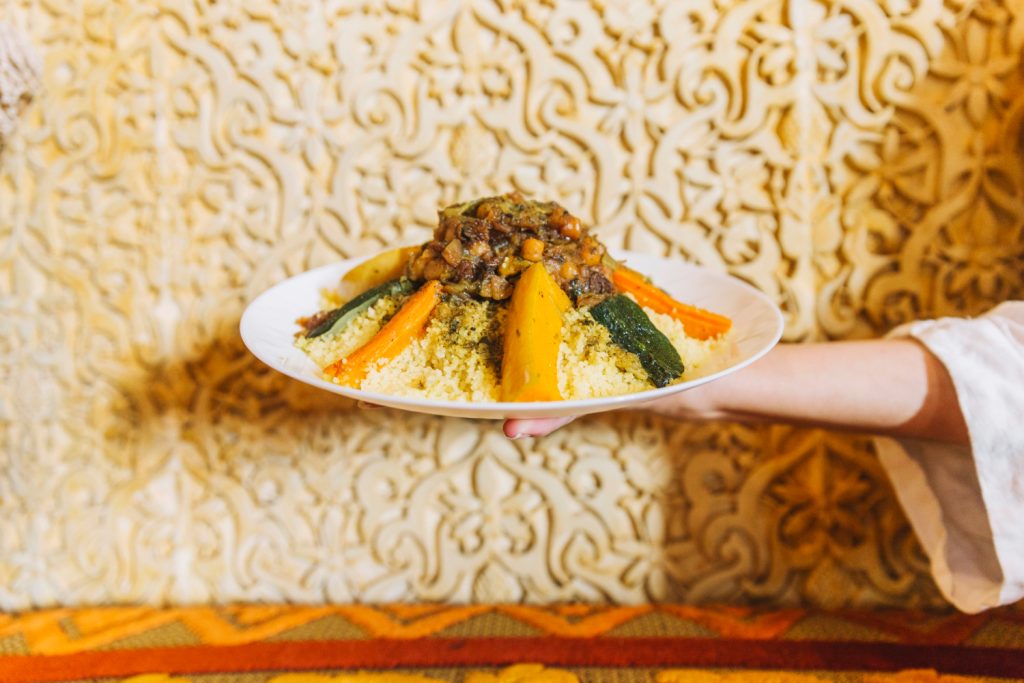
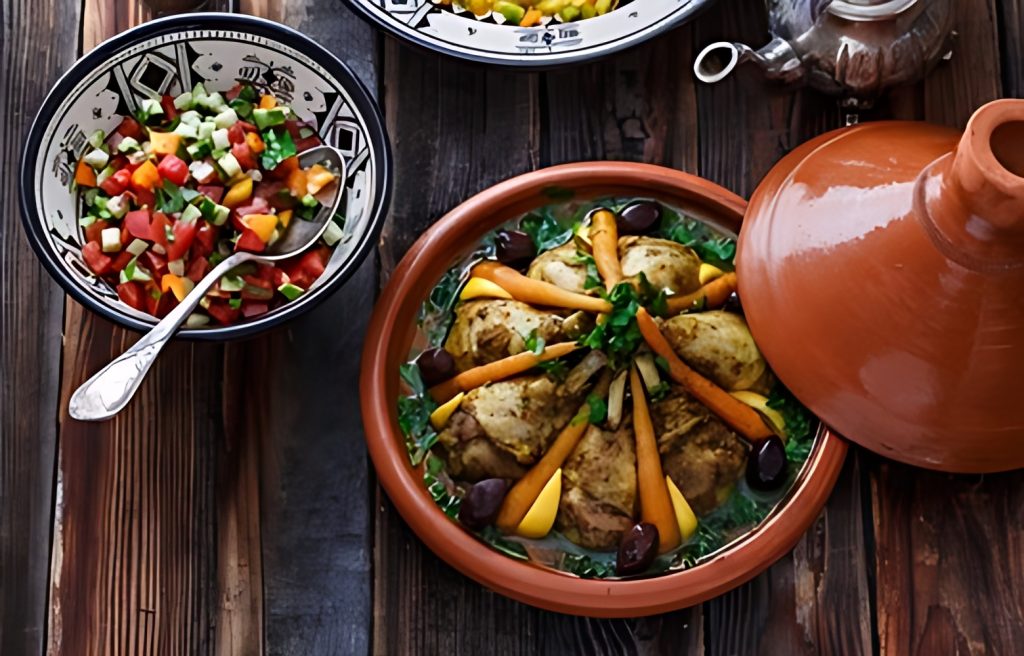
Local cuisine highlights
Casablanca’s culinary landscape is a vibrant tapestry of flavors, showcasing Morocco’s rich gastronomic heritage. Delight in the aromatic spices and tender meats of traditional tagines, or indulge in the delicate textures of couscous dishes. Sweeten your palate with an array of fragrant pastries, skillfully crafted with almonds, honey, and exotic spices. And don’t miss the opportunity to relish the freshness of the sea with a variety of succulent seafood offerings. Each bite in Casablanca is a journey through the diverse and tantalizing tastes of Moroccan cuisine.
Fusion of flavors from various cultures
The city’s cuisine reflects its cosmopolitan character, blending influences from Arab, Berber, French, and Spanish culinary traditions. Restaurants and cafes across Casablanca offer a fusion of flavors that cater to every palate.
Fashion and design
Emerging trends in fashion
Casablanca stands at the forefront of fashion, boasting a vibrant scene where local designers are celebrated for their groundbreaking creations. Bridging tradition and modernity, the city’s fashion landscape showcases a diverse range of styles, from exquisitely crafted traditional attire to cutting-edge couture. Each design exudes innovation and reflects the dynamic spirit of Casablanca’s fashion community. With a blend of cultural influences and contemporary sensibilities, the city continues to captivate the fashion world with its unique and evolving aesthetic.
Design industry’s growth
The design industry in Casablanca is flourishing, encompassing architecture, interior design, and textile production. Creativity and craftsmanship are celebrated, contributing to the city’s reputation as a hub for artistic expression.
Lifestyle and leisure
Recreational activities
In Casablanca, a vibrant city nestled on Morocco’s coast, a multitude of leisure opportunities awaits. Bask in the warm embrace of sun-kissed beaches or wander through verdant parks and gardens, immersing yourself in nature’s tranquility. Whether you’re a local or a visitor, the city caters to diverse tastes, offering a spectrum of outdoor activities and cultural encounters. From adventurous excursions to moments of serene contemplation, Casablanca beckons with its blend of natural beauty and cultural richness, promising an unforgettable experience for all who traverse its streets.
Nightlife and social scene
As night falls, Casablanca comes alive with a vibrant nightlife scene. Trendy bars, clubs, and restaurants buzz with activity, offering opportunities for socializing and entertainment into the early hours.
Challenges and opportunities
Urbanization issues
Rapid urbanization in Casablanca presents pressing challenges including traffic congestion, environmental pollution, and a scarcity of adequate housing. The city’s strategy must prioritize sustainable development to tackle these issues comprehensively. Achieving this balance entails implementing efficient transportation systems, adopting eco-friendly policies to curb pollution, and promoting affordable housing initiatives. By integrating sustainable practices into urban planning and development, Casablanca can mitigate the adverse effects of rapid growth while fostering a more livable and resilient urban environment for its residents.
Economic prospects and challenges
While the city’s economy is robust, it faces challenges such as unemployment and income inequality. Continued investment in education, infrastructure, and entrepreneurship is essential to ensure inclusive growth and prosperity.
Sustainability efforts
Environmental initiatives
Casablanca is committed to environmental sustainability, with initiatives focused on renewable energy, waste management, and green spaces. Preserving the city’s natural heritage is paramount for future generations.
Green spaces and conservation projects
Efforts in Casablanca to safeguard and enrich its green spaces are actively progressing. The city is embarking on projects to create parks, gardens, and urban forests, aimed at fostering biodiversity and enhancing the well-being of its inhabitants. These initiatives not only contribute to preserving the natural environment but also play a vital role in elevating the overall quality of life for residents by providing recreational spaces and promoting a healthier urban ecosystem.
Future outlook
Anticipated developments
With ongoing infrastructure projects and investments, Casablanca is poised for continued growth and development. The city’s strategic location and economic potential ensure its importance as a regional powerhouse.
Role in Morocco’s economy
As Morocco’s economic capital, Casablanca will play a crucial role in driving innovation, trade, and investment. Its diverse economy and dynamic workforce position it as a key player on the global stage.
Conclusion
Casablanca embodies the spirit of modernity and tradition, offering a compelling blend of history, culture, and commerce. From its bustling streets to its iconic landmarks, the city captivates visitors with its charm and vitality, making it a destination like no other.
FAQs
- Is Casablanca safe for tourists?Casablanca is generally safe for tourists, but it’s always advisable to exercise caution and be aware of your surroundings, especially in crowded areas.
- What is the best time to visit Casablanca?The best time to visit Casablanca is during the spring (March to May) and fall (September to November) when the weather is mild, and tourist crowds are smaller.
- Can visitors enter the Hassan II Mosque?Yes, visitors are welcome to enter the Hassan II Mosque outside of prayer times. Guided tours are available to explore this architectural marvel.
- What are some must-try dishes in Casablanca?Some must-try dishes in Casablanca include tagine (a slow-cooked stew), couscous (a traditional Berber dish), and seafood specialties like grilled sardines and fish tagine.
- How can I get around Casablanca?Casablanca has a comprehensive transportation network, including buses, trams, and taxis, making it easy to navigate the city. Ride-sharing services are also available for convenient travel.

